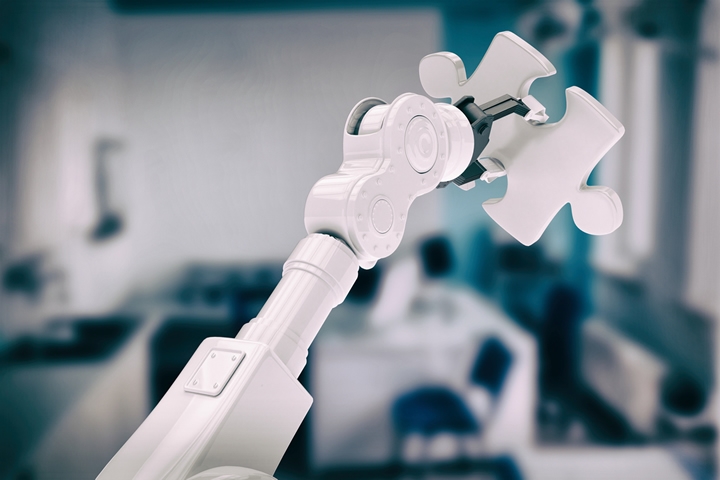Autonomous industrial robots can increase production volumes exponentially, yielding high profits. The International Trade Administration has reported that increasing robot density by a small 1% among all industries can improve productivity by 0.8%.
 Robotics Applications in Manufacturing and the Sensors Used for Maximum Efficiency
Robotics Applications in Manufacturing and the Sensors Used for Maximum Efficiency

Article from | Hokuyo
Robotics is changing the game in manufacturing, making tasks faster and more accurate. Loaded with smart sensors and algorithms, robots can now do complex and risky jobs without getting tired. They also work well alongside people, boosting workplace efficiency.
Although robots have been in the industry for a long time, they have become much more popular recently. A report from Stanford shows that around 3.4 million robots are now working in factories around the world.
Let's step back and explore how robotics has evolved in manufacturing.
Robotics Applications in Manufacturing
One of the significant benefits of robotics in manufacturing is that it has replaced traditional, high-volume, repetitive processes with efficient automated solutions. Incorporating industrial robots on the factory floor can reduce the need for human intervention, thus decreasing warehousing costs considerably.
Autonomous industrial robots can increase production volumes exponentially, yielding high profits. The International Trade Administration has reported that increasing robot density by a small 1% among all industries can improve productivity by 0.8%.
Here are some major application areas of robotics in manufacturing:
Material Handling
Manufacturing facilities require frequent material transportation. Unlike human workers, robots can lift hefty weights and move repetitively without getting distracted or tired. Moreover, they help automate material-handling processes, allowing continuous operations with unmatched precision and remarkable speed. Autonomous Mobile Robots (AMRs) and Automated Guided Vehicles (AGVs) are equipped with advanced sensors and help optimize logistics operations across manufacturing units.
Assembly and Production
Modern industries have widely adopted assembly-line robots to reduce high manual labor costs. This sophisticated equipment can produce multiple product batches and perform various operations, such as welding, soldering, fastening, placing components, and more.
Quality Control
One major manufacturing concern is producing high-quality products and improving customer satisfaction. Robots are integrated with advanced vision systems and sensors that can quickly detect defects and analyze real-time data. These intelligent systems help optimize production processes and ensure adherence to strict quality standards.
Cobots
Cobots or collaborative robots have revolutionized the manufacturing landscape with their adaptivity and flexibility. They also take up physically strenuous and mundane tasks, allowing their human co-workers to focus on other core operational aspects. As they help create a safe co-working space alongside human workers, cobots are an invaluable tool to improve overall productivity.
Packaging and Palletizing
Robots simplify packaging and palletizing with astounding speed, precision, and unprecedented flexibility. They can efficiently adapt to a range of products and packaging types. As robots are combined with advanced features like quality control functions, product inspection, and barcode reading, they can solve common packaging issues independently.
Sensors For Maximum Manufacturing Efficiency
The rapid development of advanced sensing and perception technologies has revolutionized the manufacturing setup. They help synthesize critical information for real-time decision-making, improving the robot's accuracy and unparalleled efficiency.
Sensors are the backbone of modern automation as they transform simple machines into dynamic systems. Here are the top sensing solutions that help in maximizing manufacturing efficiency:
Laser Distance Sensors
Laser distance sensors help with industrial indoor and outdoor measurements without contact with the target. They use laser beams to calculate the distance with high millimeter accuracy. The Hokuyo PGL series has two digital outputs for level monitoring and distance setting, making it a preferred option for measurement applications.
Hot Metal Detectors
These sensors help detect hot metal even in extreme environments. They use a through-beam system for accurate long-range transmission and detect hot metal when the infrared laser beam is interrupted.
Hokuyo offers a wide range of hot metal detectors, including the PHV-10 series, PRV-10 series, LAV-10/11 series, and PX-DX/WX series.
LiDAR
Light Detection and Ranging sensors (LiDARs) are remote sensing solutions that help measure precise distances in real-time. Manufacturing units generally use these sensors to detect presence, monitor areas, and recognize objects.
UST-05LX, UST-10LN, UTM-30LN, and UGM-50LAP are highly efficient LiDAR sensor series designed by Hokuyo.
Optical Data Transmission
Sensors such as optical transceivers can transmit data quickly and reliably over long distances. They facilitate bidirectional communication between different units.
Hokuyo’s sensing solutions include the BWF, CWF-EWF, DMS, DMG, DMJ, and DMH series for optical data transmission.
Sensors: The True Power of Robotics
Today's robots are smarter and more flexible because of new sensor technologies. These sensors make it easy for robots to quickly change their configurations to perform new tasks, helping factories try new things and improve their work. Sensors also allow robots to better understand and respond to different jobs in manufacturing.
If you're looking for the finest in sensing technology, consider Hokuyo's array of advanced sensing solutions. Our team of experts is ready to help you make the perfect choice tailored to your manufacturing needs.
The content & opinions in this article are the author’s and do not necessarily represent the views of RoboticsTomorrow
Comments (0)
This post does not have any comments. Be the first to leave a comment below.
Featured Product

